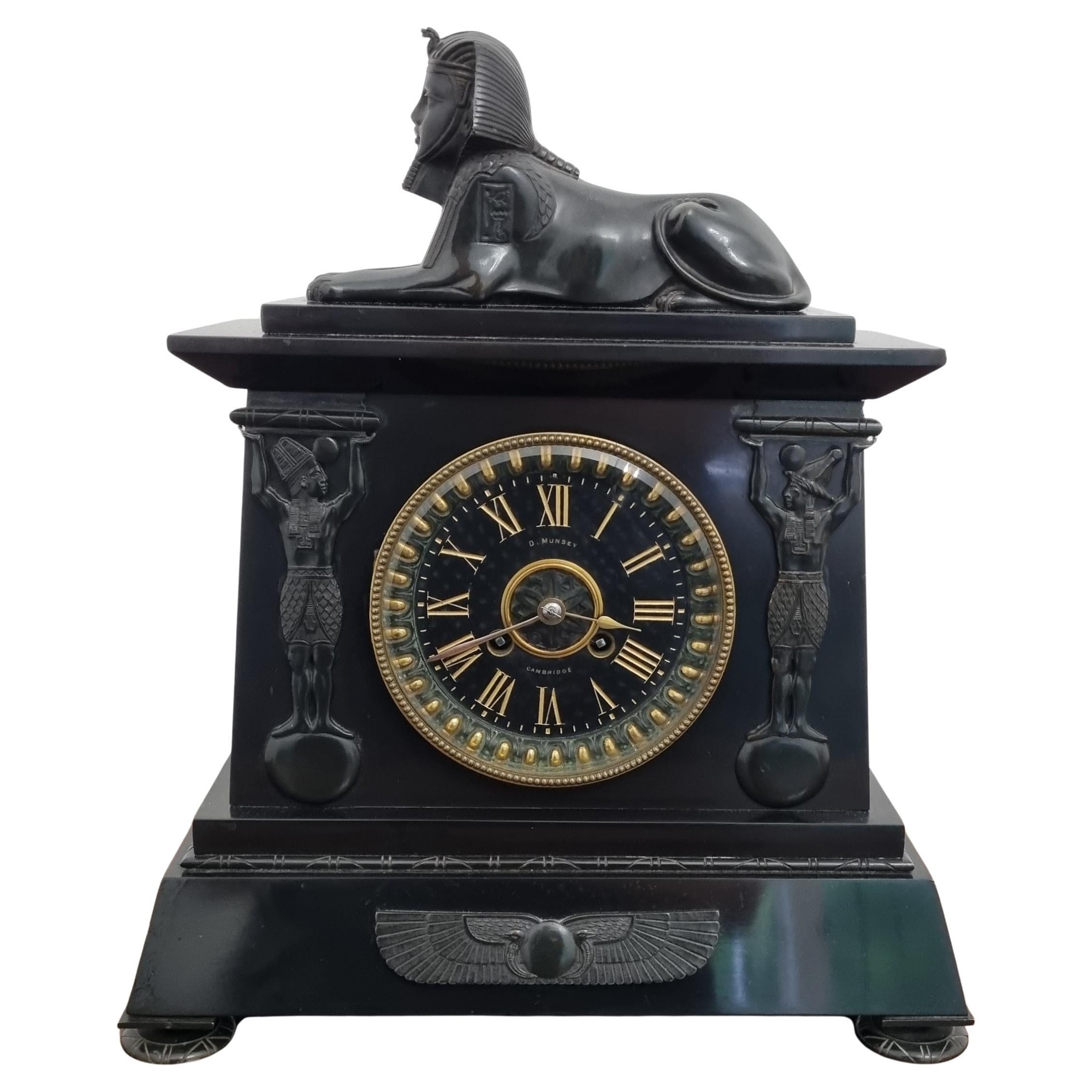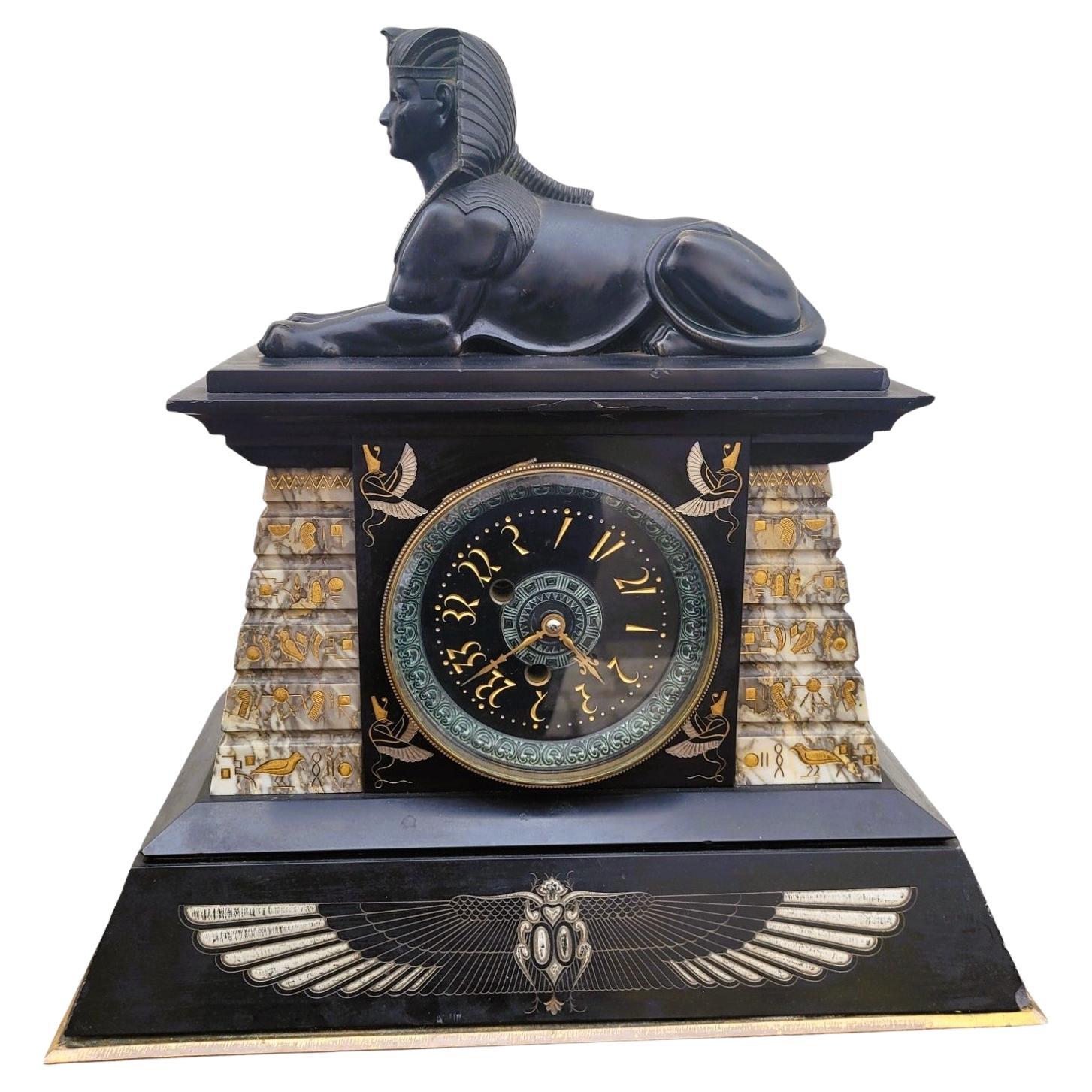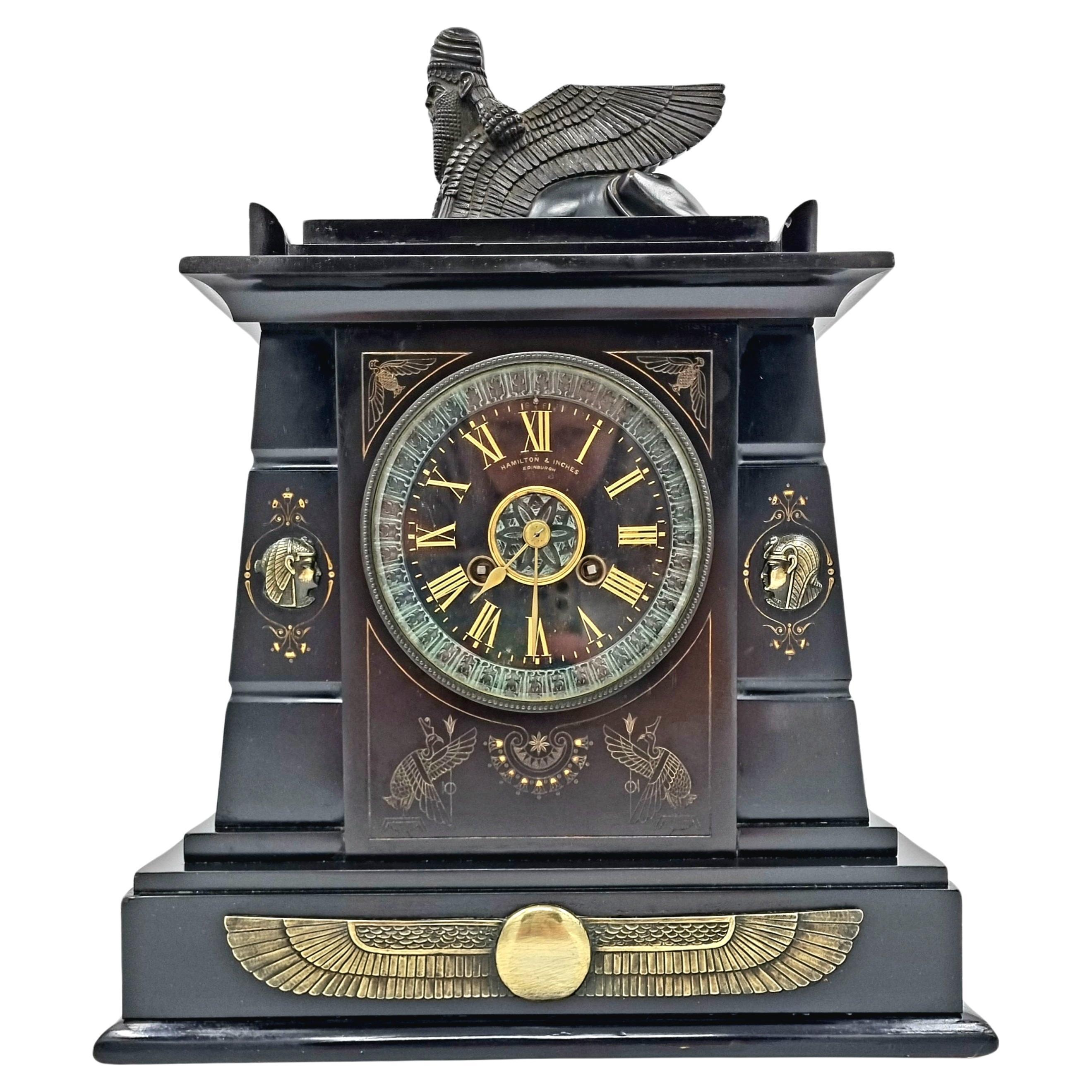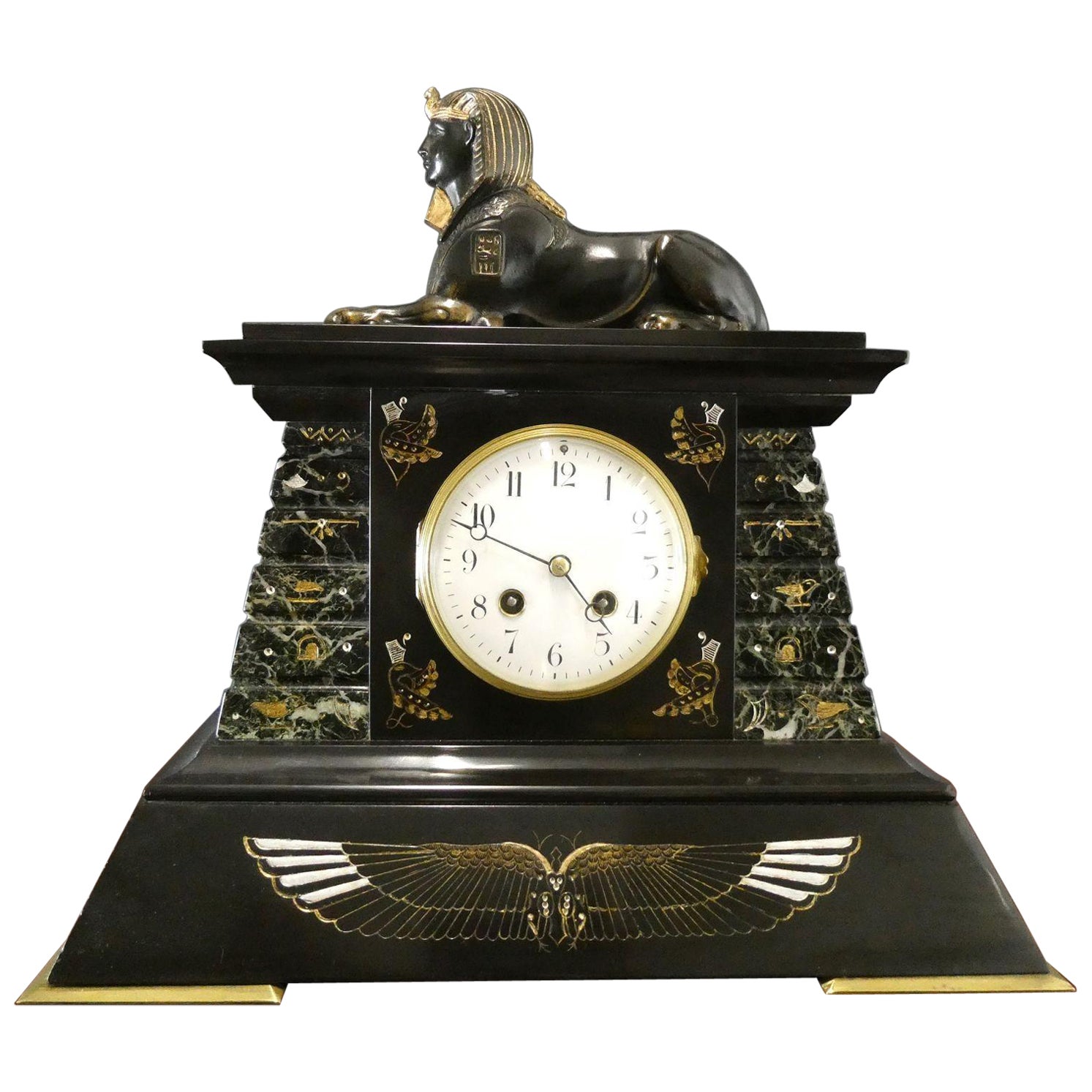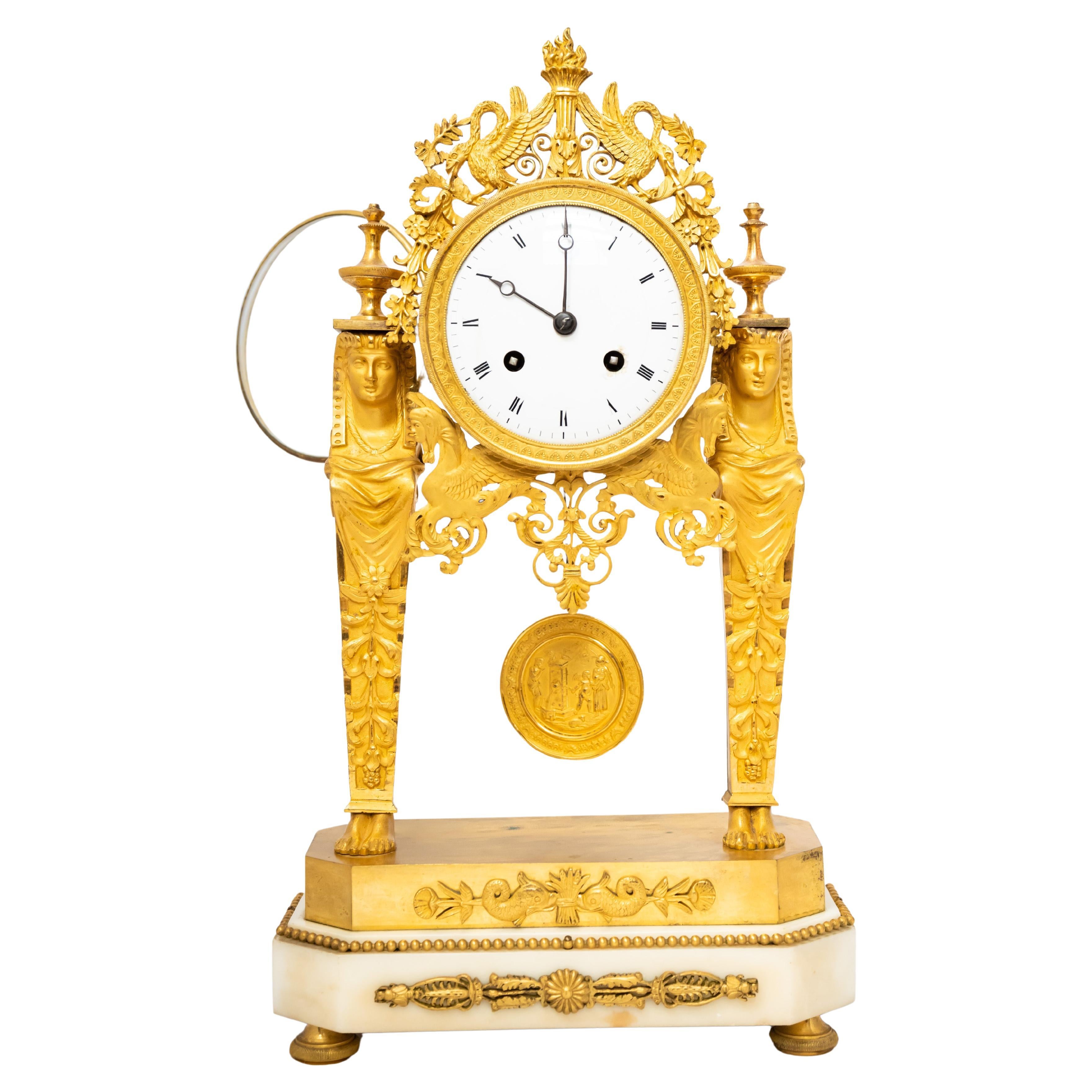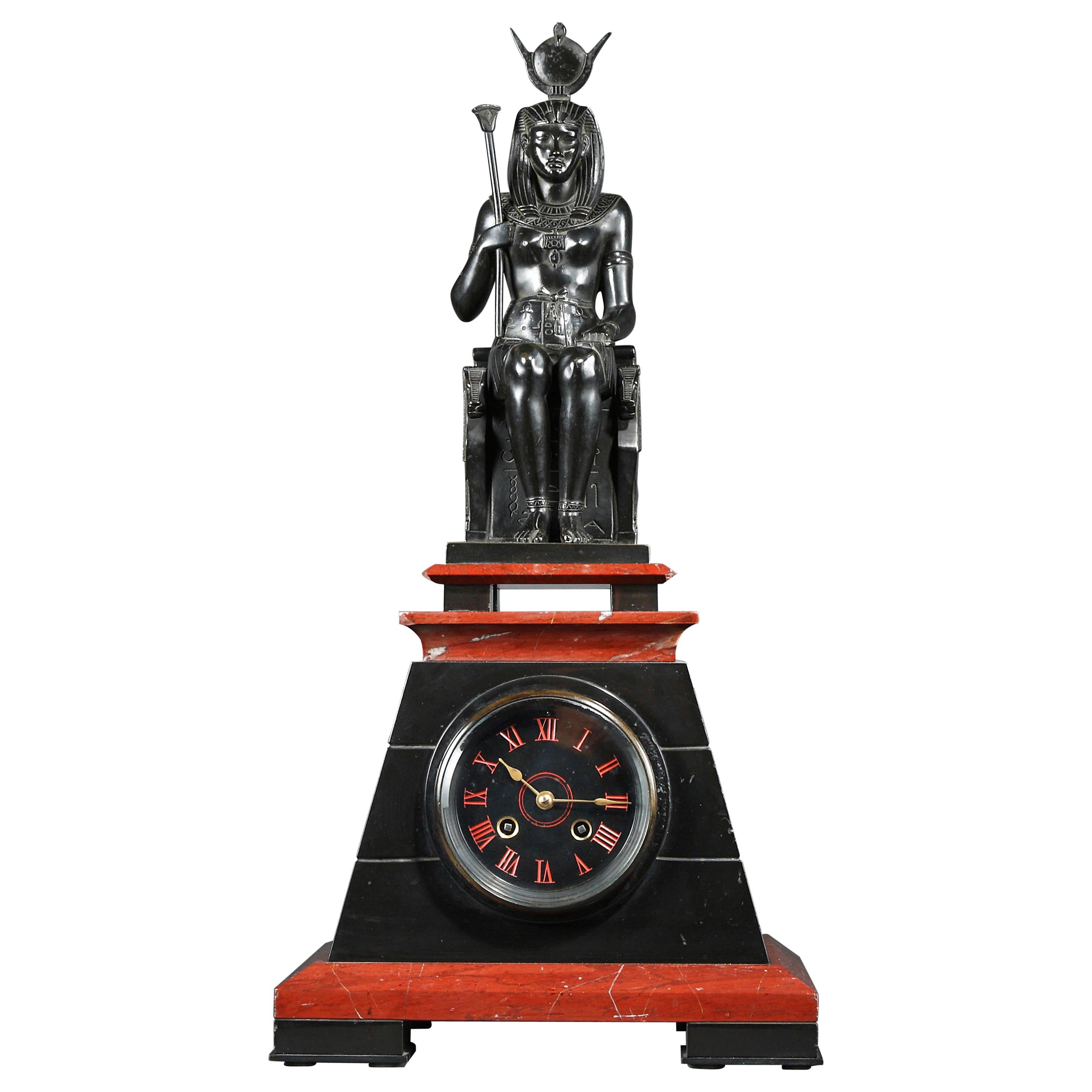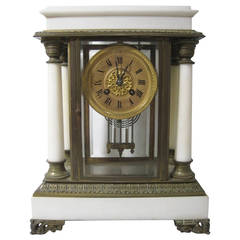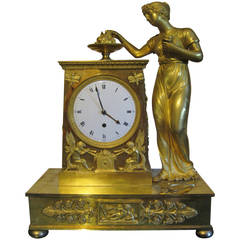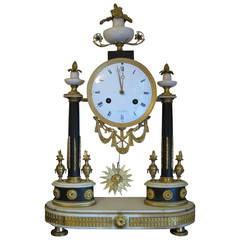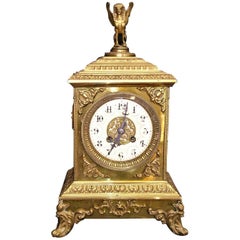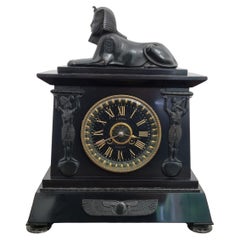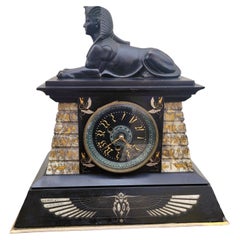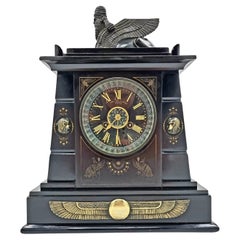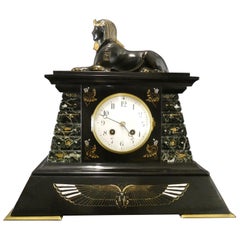Items Similar to Egyptian Revival Grande Sonnerie Clock from the Biedermeier Period
Want more images or videos?
Request additional images or videos from the seller
1 of 10
Egyptian Revival Grande Sonnerie Clock from the Biedermeier Period
$6,500
£5,027.48
€5,723.50
CA$9,332.95
A$10,196.54
CHF 5,344.04
MX$121,749.89
NOK 67,629.33
SEK 63,062.94
DKK 42,745.40
About the Item
Egyptian Revival Grande Sonnerie clock from the Biedermeier period. It features animated workmen that swing an anvil, pump bellows while making a 'clack clack' noise.
- Dimensions:Height: 32.25 in (81.92 cm)Width: 22 in (55.88 cm)Depth: 6.5 in (16.51 cm)
- Style:Egyptian Revival (Of the Period)
- Period:
- Date of Manufacture:circa 1830
- Condition:Has veneer losses and also losses to one of the figures.
- Seller Location:Hamilton, CA
- Reference Number:1stDibs: LU135528785093
About the Seller
5.0
Platinum Seller
Premium sellers with a 4.7+ rating and 24-hour response times
Established in 2010
1stDibs seller since 2015
1,360 sales on 1stDibs
Typical response time: 1 hour
- ShippingRetrieving quote...Shipping from: Hamilton, Canada
- Return Policy
More From This Seller
View All19th Century French Empire Style Portico Clock
Located in Hamilton, Ontario
19th century French Empire style portico clock.
This e Empire style clock features Carrara marble, bevelled glass, bronze accents and a crystal r...
Category
Antique 19th Century French Empire Mantel Clocks
$3,995 Sale Price
20% Off
Early 19th Century French Empire Period Gilt Bronze Figural Clock
Located in Hamilton, Ontario
Early 19th century French Empire period gilt bronze figural clock.
Free shipping within the United States and Canada.
Category
Antique Early 19th Century French Empire Mantel Clocks
$11,195 Sale Price
20% Off
French Empire Period Marble and Ormolu Clock, Early 19th Century
Located in Hamilton, Ontario
Early 19th century French Empire period marble and ormolu clock.
French Carrara marble Portico clock with extensive ormolu fretwork mounted on two finely decorated marble columns ...
Category
Antique Early 19th Century French Empire Mantel Clocks
$10,795 Sale Price
20% Off
French Empire Style Bronze Mantel Clock
Located in Hamilton, Ontario
French Empire style bronze mantel clock.
Category
Antique 19th Century French Empire Mantel Clocks
Materials
Brass, Bronze
$5,000 Sale Price
20% Off
Lenzkirch Bracket Clock in French Louis XVI Style, 19th Century
Located in Hamilton, Ontario
German Lenzkirch mahogany and carved ormolu cased mantel clock. The clock has wonderful carved scrolling feet supporting a rolled ridged stepped base decorated with leaf carved ormol...
Category
Antique 19th Century German Louis XVI Mantel Clocks
19th Century French Marble Mantel Clock, Louis XVI Style
Located in Hamilton, Ontario
19th century French marble mantle clock.
High quality black marble with red marble accents retailed by Glenny & Sons Co. Buffalo.
Free shipp...
Category
Antique 19th Century French Louis XVI Mantel Clocks
You May Also Like
19th Century Egyptian Revival Mantel Clock by D. Munsey of Cambridge
Located in Hoddesdon, GB
A fine Egyptian Revival mantel clock retailed by D. Munsey of Cambridge, circa 1880s, black marble and slate clock case with elaborate bronze mounts.
The architectural case is surmo...
Category
Antique 19th Century British Egyptian Revival Mantel Clocks
Materials
Belgian Black Marble, Slate, Bronze
Egyptomania Marble Clock, 19th Century
Located in MARSEILLE, FR
Large clock in the style of Egyptomania, in marble of different colors, decorated with stylized hieroglyphs, falcons and scarabs.
It is topped with a sphinx in patinated bronze.
Eg...
Category
Antique 19th Century French Egyptian Revival Mantel Clocks
Materials
Marble
19th Century Egyptian Revival Clock by Hamilton and Inches
Located in Hoddesdon, GB
An Egyptian Revival Black Marble Clock
Circa 1860s made by the renowned clock and jewellery makers Hamilton and Inches of Edinburgh with Royal ...
Category
Antique Mid-19th Century Scottish Egyptian Revival Mantel Clocks
Materials
Bronze
Egyptian Revival Bronze and Marble Mantel Clock
By Societe Clusienne
Located in Norwich, GB
Egyptian Revival Bronze and Marble Mantel Clock
Egyptian revival mantel clock housed in a polishes black slate and marble stepped case, decorated with winged uraeus and hieroglyphs, surmounted by a patinated bronze sphinx wearing nemes and resting on lions paw feet.
Enamel dial with Arabic numerals and original ‘blued’ steel hands.
Eight day French movement with anchor escapement striking the hours and halves on a silvered bell. The backplate signed Societe Clusienne S.C.A.P.H. Cluses and numbered 4144. C.1870
Societe Clusienne were based in Cluses near to the Swiss border in France.
The case attributed to G.Servant
Georges Emile Henri Servant ( 1828-1890) succeeded his father at their foundry at Rue Vieille-du-Temple, Paris in 1855. He specialised in the production of Neo-Egyptian style clocks.
He was noted for the high quality of his bronzes at both the Paris Universal Exhibition 1855 and the London Exhibition in 1862.
Many of his clocks were exported to the United States where his Sphinx clocks...
Category
Antique 1870s French Mantel Clocks
Materials
Slate
Marble and Fire-Gilt-Bronze Directoire-Era Portico Clock Retour d'Egypte Style
Located in 263-0031, JP
A small, svelte French portico clock from the Directory Era, 1795-99. In the "Retour d’Egypte” style that became quite the hot thing following Napoleon’s - ahem! - incursion into Egy...
Category
Antique Late 18th Century French Egyptian Revival Mantel Clocks
Materials
Marble, Bronze
$2,272 Sale Price
20% Off
Neo-Egyptian Marble Clock Attributed to G. Servant, France, Circa 1870
By Georges Emile Henri Servant
Located in PARIS, FR
Black and red marble pyramid shaped Egyptian style clock attributed to G. Servant, surmounted by a patinated bronze figure representing the Egyptian goddess Isis sitting on her throne. Wearing the Hathor hairdress (the solar disc surrounded by the sacred cow horns), she holds in her right hand the Ouadj, the goddesses scepter surmounted by a canopy of papyrus, symbolizing health and eternal youth and in her left hand, the cross of life Ankh, symbol of rebirth and eternity.
That Egyptian style in fashion since Napoleon the First and his military campaigns in Egypt around 1799 was rediscovered in France in the 1830's and above all in the 1860's. Some renowned French artists, such the sculptors and bronze-casters Guillaume Denière (1815-1903), Emile Hébert (1828-1893) et Georges Servant (1828-1890), presented at the 1867 and 1878 Paris Universal Exhibitions, an a-part section dedicated to their Egyptian style production. Their shows drew then considerable attention from the public and the wealthy collectors. During the 1867 Universal Exhibition, one could admire the Stand realized by the French silversmith-jeweller Gustave Baugrand (1826-1870), where his works executed in most Fine materials took inspiration from the Egyptian Antiques, exhibited then in the Louvre museum.
Georges Emile Henri Servant (1828-c.1890), who took over his father in 1855 at their foundry, rue Vieille-du-Temple, in Paris, specialized in the production of neo-Egyptian style clocks, very popular in France since 1860’s, and also the making of Greek style decorative objects. He drew considerable attention to the high quality of his bronzes at the 1855 Paris Universal Exhibition and then at the 1862 London Exhibition. At this time Servant exported up to 40% of his production, principally to the United States, where for instance, his clocks were sold with great success by Louis Tiffany Inc. or Hamann & Roche of New York. But his success came really at the 1867 Paris Universal Exhibition, where he was awarded a gold medal for his neo-Greek and Egyptian works (Les Merveilles...
Category
Antique 1870s French Egyptian Revival Table Clocks and Desk Clocks
Materials
Marble, Bronze
More Ways To Browse
Antique Furniture Egypt
Used Office Furniture Egypt
Antique Bellows
Antique Pump
Antique Pumps
Antique Anvil
Biedermeier Antique Clocks
Grande Sonnerie
La Perle
Mantle Garniture
Oval Clock
Art Deco Clock Set
Dome Clock
Mantel Clock With 2 Candelabras
Pendule France
Antique French Clock Movement
Art Deco Onyx Clocks
Bear Clock
